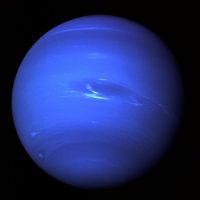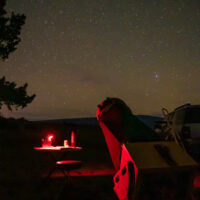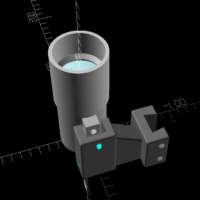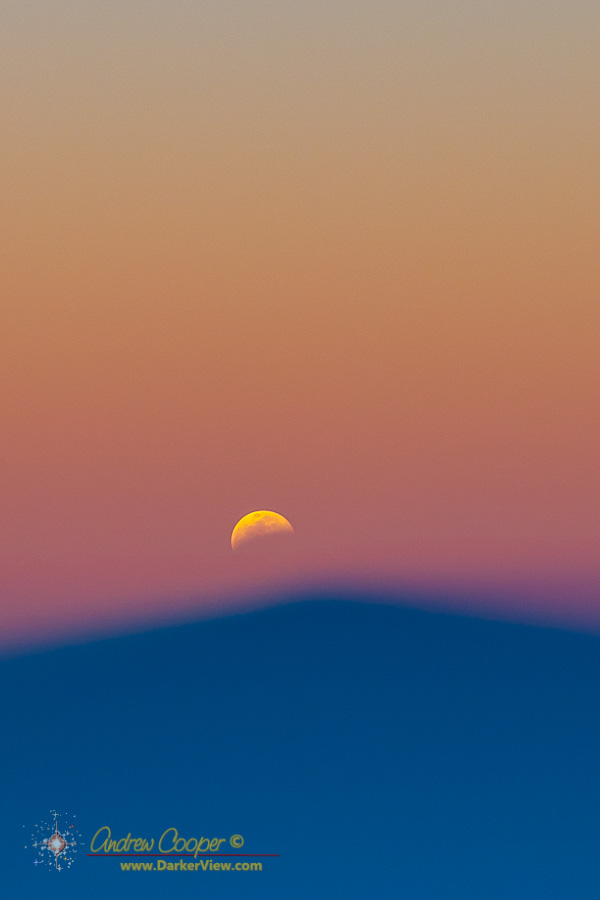
Category: Astronomy
Exploring the cosmos
A Not Quite Total Lunar Eclipse
Normally when I see a partial lunar eclipse on the calendar I do not take much note. As a partial will not create the deep red Moon that makes a lunar eclipse so striking, it is not something that I usually make a point to view.
This eclipse was a bit different. As this was a very deep partial, only a few percent of the Moon remaining in the sunlight, it should look pretty good… And it did. I setup the little TV-76mm scope to snap a few photos.
Even a not quite total lunar eclipse can be quite nice. Since this eclipse occured just a few degrees from the Pleiades star cluster it was possible to frame both in the camera with a wider field of view. Thus I changed to a classic 100mm f/2.8 Canon FD lens to shoot a few of the cluster and the eclipsed Moon.
Of course this means I will get to sleep at midnight and need to get up at 5am for work. The price I will pay for staying up to watch an eclipse.

Looking South
Orion and Meteor
A Bright Night at Kaʻohe
A dark moon weekend? I had not been out in a while, time for some dark skies with a telescope. This night had been scheduled for a while, the folks I work with keep asking me about getting a look through one of my big ‘scopes. Thus this night had been set aside on a calendar normally used for staff meetings and investor conference calls.
Where? Kaʻohe of course, the best place for this on the west side, easy range for my friends coming up from Kona.
Everone arrived on schedule at sunset, car pooling up from Kona. Greeted by a spectacular sky, a slim crescent Moon seeting into the golden glow of Hualalai, the bright planets Venus and Jupiter appearing in the gloaming.
Continue reading “A Bright Night at Kaʻohe”A 3D Printed Finder ‘Scope
I wanted a smaller, lighter finder ‘scope for the Astrola, and I wanted right angle to stop straining my neck!
I have been using a big Orion 9x60mm finder on the Astrola, the only telescopic finder ‘scope I have among the Telrads. It is nice, with a bright image that shows many faint fuzzies. It is also huge, and very heavy, it is also straight through, requiring one to crane your neck around to view through it on the Newtonian ‘scope.
A small, lightweight finder was in order, a perfect project for a newly arrived 3D printer.
Continue reading “A 3D Printed Finder ‘Scope”Neptune at Opposition
Today the planet Neptune will pass through opposition, directly opposite the Sun in our sky. The planet will be well placed for observation all night long, rising at sunset, transiting at midnight, and setting at sunrise. If you are looking to observe Neptune, it is currently shining at magnitude 7.8 in eastern Aquarius.

As the outer planets Uranus and Neptune move so slowly across the sky, the timing of oppositions is driven by the Earth’s orbit and occur each year at nearly the same time. Neptune’s orbital period is 164.8 years, taking over a century and a half to circle the celestial globe once. As Neptune was discovered in 1846, it has completed a little over one orbit since discovery.
Odd Words
Every now and then you run into a word that has you reaching for the dictionary. Or, more commonly these days, typing it into Google.
Poetaster?
Yeah, have to look that one up.
Continue reading “Odd Words”







